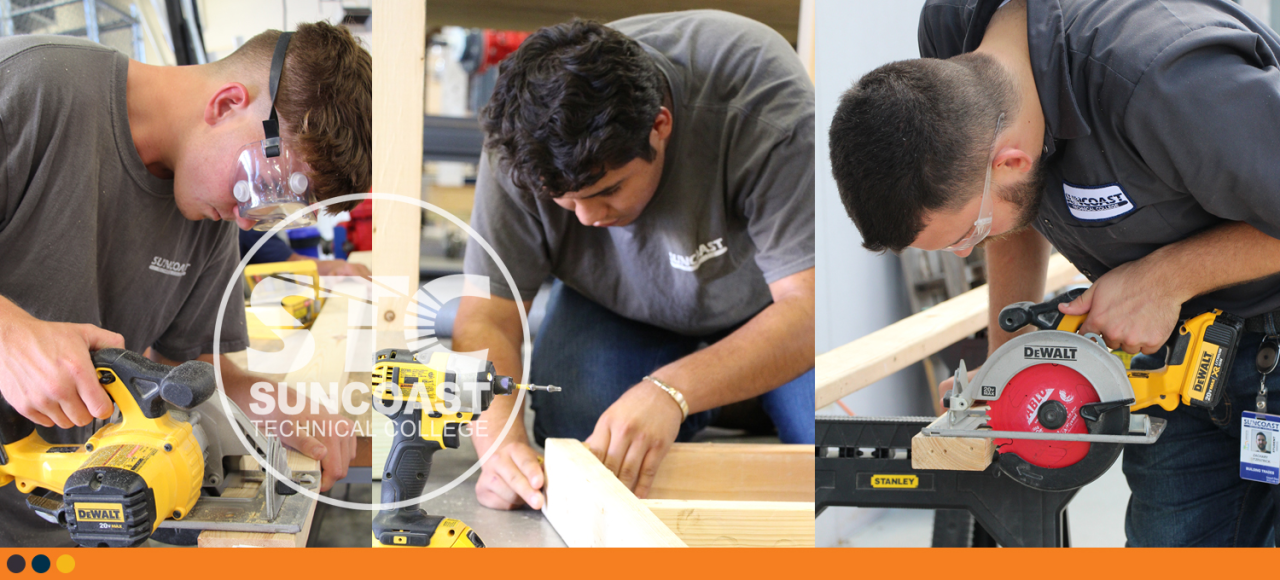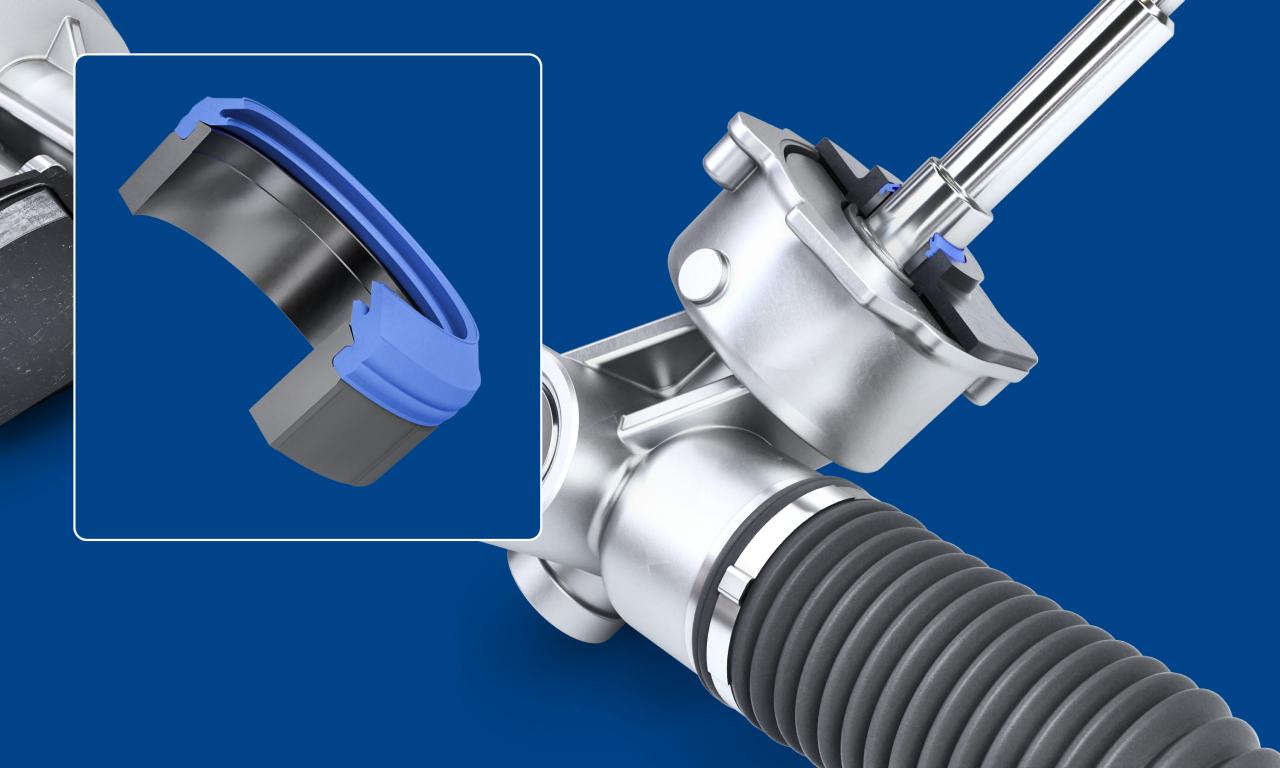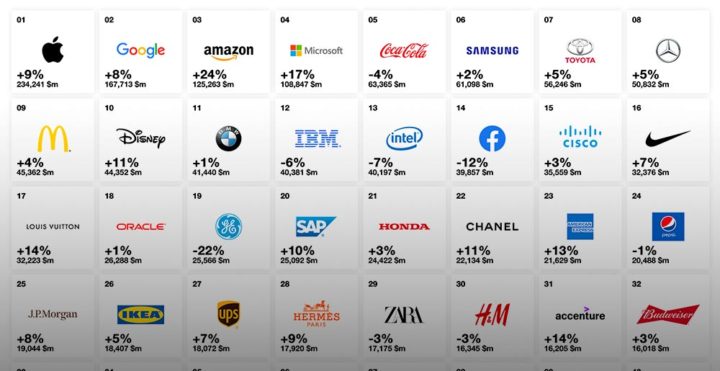Latest Concrete Technology: Building the Future
Latest concrete technology is revolutionizing the construction industry, pushing the boundaries of what’s possible and paving the way for more sustainable, durable, and innovative structures. From self-healing concrete to 3D […]
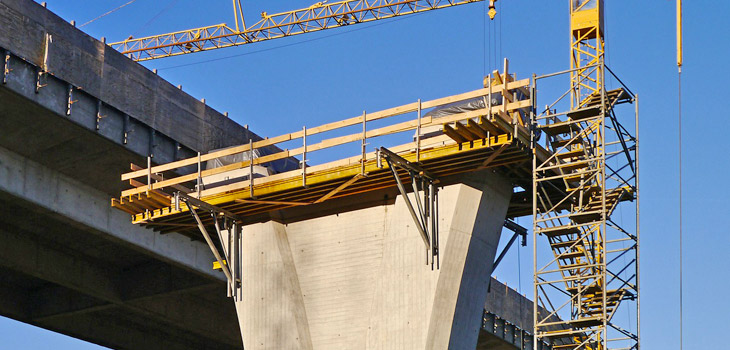
Latest concrete technology is revolutionizing the construction industry, pushing the boundaries of what’s possible and paving the way for more sustainable, durable, and innovative structures. From self-healing concrete to 3D printing, the advancements in concrete technology are reshaping the landscape of modern architecture and infrastructure.
This exploration delves into the exciting world of concrete innovation, examining its environmental impact, exploring high-performance materials, and showcasing the transformative power of smart concrete. We’ll also uncover the future of concrete technology, with insights into emerging trends like nanotechnology and bio-based materials.
Sustainable Concrete Solutions

The construction industry plays a significant role in global environmental impact. Traditional concrete production methods contribute to greenhouse gas emissions, resource depletion, and pollution. Sustainable concrete solutions are crucial for mitigating these negative impacts and building a more environmentally responsible future.
Environmental Impact of Traditional Concrete Production
The production of conventional concrete is a resource-intensive process that has substantial environmental consequences.
- Cement Production: Cement, the key ingredient in concrete, is produced by heating limestone and other materials to extremely high temperatures. This process is energy-intensive and releases significant amounts of carbon dioxide (CO2), a major greenhouse gas. According to the Global Cement and Concrete Association (GCCA), cement production accounts for about 8% of global CO2 emissions.
- Aggregate Extraction: Concrete requires large quantities of aggregates, such as sand and gravel, which are extracted from natural sources. Aggregate mining can lead to habitat destruction, soil erosion, and water pollution.
- Water Consumption: Concrete production requires significant amounts of water for mixing and curing. This can strain water resources, especially in regions with water scarcity.
Use of Recycled Materials in Concrete Mixtures
Incorporating recycled materials into concrete mixtures is a promising strategy for reducing the environmental footprint of concrete production.
- Recycled Concrete Aggregates (RCA): RCA is produced by crushing and processing waste concrete from demolition and construction projects. Using RCA as a partial replacement for virgin aggregates reduces the need for new aggregate extraction and lowers the overall carbon footprint of concrete.
- Fly Ash: Fly ash is a byproduct of coal-fired power plants. When added to concrete, it improves workability, reduces water demand, and enhances strength and durability. It also helps reduce CO2 emissions by replacing a portion of the cement.
- Silica Fume: Silica fume is a fine powder generated during the production of silicon metal or ferrosilicon alloys. It significantly improves the strength, durability, and resistance to chemical attack of concrete. Like fly ash, it also helps reduce the amount of cement required.
Innovative Techniques for Reducing the Carbon Footprint of Concrete
Numerous innovative techniques are being developed to minimize the environmental impact of concrete production.
- Low-Carbon Cement: Researchers are developing alternative cements with lower CO2 emissions than traditional Portland cement. These include geopolymer cements, which are made from industrial byproducts and require less energy to produce.
- Carbon Sequestration: Some innovative concrete formulations incorporate materials that can capture and store CO2 from the atmosphere. This process, known as carbon sequestration, can help offset the CO2 emissions associated with concrete production.
- Self-Healing Concrete: Self-healing concrete is designed to repair micro-cracks that can form over time. This reduces the need for costly repairs and extends the lifespan of concrete structures, ultimately reducing the environmental impact of construction.
Sustainable Concrete Projects, Latest concrete technology
- The Eden Project, Cornwall, UK: The Eden Project is a renowned sustainable architecture project that features biodomes constructed using a combination of recycled materials, including concrete made with fly ash and other industrial byproducts.
- The GreenPix Zero Energy House, Netherlands: This innovative home is built entirely from sustainable materials, including concrete made with recycled aggregates and a low-carbon cement formulation. It generates enough energy to meet its own needs, showcasing the potential for sustainable concrete in residential construction.
High-Performance Concrete
High-performance concrete (HPC) is a type of concrete that exhibits superior properties compared to conventional concrete. It is engineered to achieve exceptional strength, durability, and other desired characteristics.
Key Characteristics of High-Performance Concrete
HPC possesses several key characteristics that distinguish it from conventional concrete:
- High Compressive Strength: HPC can achieve significantly higher compressive strength than ordinary concrete, often exceeding 60 MPa (8,700 psi). This enhanced strength allows for the construction of thinner structures, reducing material consumption and construction costs.
- Improved Durability: HPC exhibits enhanced resistance to various environmental factors, including freeze-thaw cycles, chemical attack, and abrasion. This durability translates into longer service life and reduced maintenance requirements.
- Enhanced Workability: HPC is designed to have improved workability, making it easier to place and consolidate, even in complex shapes and confined spaces. This ease of handling reduces labor costs and improves construction efficiency.
- Reduced Permeability: HPC typically has lower permeability than ordinary concrete, reducing the ingress of water and harmful substances. This characteristic enhances durability and protects reinforcing steel from corrosion.
- High Tensile Strength: Some types of HPC achieve significantly higher tensile strength than conventional concrete, improving its resistance to cracking and other forms of structural failure.
Advanced Admixtures and Additives
The exceptional properties of HPC are often achieved through the use of advanced admixtures and additives. These specialized materials enhance the concrete’s performance and tailor it to specific applications.
- Superplasticizers: These admixtures increase the workability of concrete without reducing its strength. They allow for the use of lower water-to-cement ratios, resulting in higher strength and durability.
- Air-Entraining Agents: These additives introduce microscopic air bubbles into the concrete mix, improving its resistance to freeze-thaw cycles and reducing the risk of frost damage.
- Mineral Admixtures: These materials, such as fly ash, silica fume, and slag, enhance the strength, durability, and workability of concrete. They also contribute to reducing the environmental impact of concrete production.
- Fiber Reinforcement: The addition of fibers, such as steel or synthetic fibers, improves the tensile strength and crack resistance of concrete. This is particularly beneficial in applications where the concrete is subjected to impact or tensile stresses.
- Water-Reducing Admixtures: These admixtures reduce the amount of water required for a given consistency, leading to higher strength and reduced permeability.
Benefits of High-Performance Concrete in Specific Applications
HPC offers numerous benefits in various construction applications, including:
- Bridges and Structures: HPC’s high strength and durability make it ideal for constructing bridges, overpasses, and other structures that require exceptional load-bearing capacity and long-term performance.
- High-Rise Buildings: HPC’s ability to withstand high stresses and its reduced permeability make it suitable for constructing high-rise buildings, where structural integrity and resistance to environmental factors are critical.
- Precast Concrete Elements: HPC is used in the production of precast concrete elements, such as beams, columns, and slabs, due to its enhanced strength and durability. This allows for faster construction and reduces on-site labor requirements.
- Infrastructure Projects: HPC plays a vital role in infrastructure projects, such as highways, airports, and tunnels, where durability, strength, and resistance to wear and tear are essential.
- Industrial and Commercial Buildings: HPC is used in industrial and commercial buildings where high strength, durability, and resistance to chemical attack are required.
Comparison of Different Types of High-Performance Concrete
| Type of HPC | Key Characteristics | Typical Applications |
|---|---|---|
| High-Strength Concrete (HSC) | Compressive strength exceeding 60 MPa (8,700 psi) | Bridges, high-rise buildings, precast elements |
| High-Performance Fiber-Reinforced Concrete (HPFRC) | High tensile strength, enhanced crack resistance, improved impact resistance | Structures subjected to impact or tensile stresses, precast elements |
| Self-Consolidating Concrete (SCC) | High flowability, excellent workability, reduced vibration requirements | Complex shapes, confined spaces, precast elements |
| Reactive Powder Concrete (RPC) | Extremely high strength (up to 200 MPa), high ductility, excellent resistance to wear and tear | Specialized applications requiring exceptional strength and durability |
| Shotcrete | High strength, rapid hardening, excellent adhesion to surfaces | Tunnel lining, slope stabilization, repair and rehabilitation of structures |
Self-Consolidating Concrete (SCC): Latest Concrete Technology
Self-Consolidating Concrete (SCC) is a type of concrete that can flow and consolidate under its own weight without the need for external vibration. It is a highly flowable concrete that can easily fill complex shapes and congested reinforcement, making it ideal for challenging construction projects.
Properties and Advantages of SCC
SCC offers numerous advantages over traditional concrete, including:
- Improved Workability: SCC’s high flowability eliminates the need for vibration, reducing labor costs and noise pollution. This also allows for easier placement in congested areas and complex geometries.
- Enhanced Durability: The absence of vibration reduces the risk of segregation and bleeding, resulting in a more homogeneous and durable concrete. This is especially beneficial for structures exposed to harsh environments.
- Increased Productivity: Faster placement and curing times lead to significant time and cost savings. The ability to place SCC in complex structures without vibration allows for faster construction progress.
- Reduced Labor Requirements: The reduced need for vibration and compaction translates to lower labor costs and less reliance on skilled labor.
- Improved Safety: SCC’s self-consolidating nature reduces the risk of worker injuries associated with vibration and manual compaction.
Mechanism of Flowability and Segregation Resistance
SCC’s flowability and segregation resistance are achieved through a carefully designed mix proportioning and the use of specialized admixtures.
- Flowability: The high flowability of SCC is achieved by using a high water-to-cement ratio and incorporating superplasticizers. These admixtures reduce the viscosity of the concrete mix, allowing it to flow easily under its own weight.
- Segregation Resistance: Segregation occurs when the heavier components of concrete, such as aggregates, settle to the bottom, leaving a weaker concrete at the top. SCC resists segregation by using well-graded aggregates and incorporating viscosity-modifying agents that maintain the stability of the mix during placement.
Applications of SCC in Complex Structures
SCC’s unique properties make it particularly suitable for complex structures, such as:
- High-Rise Buildings: SCC’s ability to flow easily through congested reinforcement and complex geometries is ideal for constructing high-rise buildings with intricate designs.
- Bridges and Tunnels: SCC can be used to create complex shapes and intricate details in bridge decks and tunnel linings, minimizing the need for formwork and reducing construction time.
- Precast Concrete Elements: SCC’s high flowability and self-compacting properties are advantageous for producing precast concrete elements with intricate designs and complex shapes.
- Underground Structures: SCC’s ability to fill confined spaces and resist segregation makes it ideal for constructing underground structures like basements and tunnels.
Examples of SCC Projects and Their Challenges
SCC has been successfully implemented in numerous large-scale projects around the world, showcasing its versatility and effectiveness.
- Burj Khalifa, Dubai: The world’s tallest building, the Burj Khalifa, utilized SCC for its massive concrete pours, demonstrating the ability of SCC to handle large volumes of concrete and complex geometries.
- The Millau Viaduct, France: This iconic bridge utilized SCC for its massive concrete piers, showcasing the material’s ability to withstand extreme weather conditions and heavy loads.
- The Beijing National Stadium (Bird’s Nest), China: The intricate design of the Bird’s Nest utilized SCC to achieve its complex geometry and intricate details.
While SCC offers numerous benefits, there are also some challenges associated with its use:
- Cost: SCC is typically more expensive than traditional concrete due to the specialized admixtures and rigorous quality control required.
- Mix Design: Achieving the desired flowability and segregation resistance requires careful mix design and rigorous quality control.
- Temperature Control: SCC is sensitive to temperature variations, requiring careful temperature control during mixing, placement, and curing.
Fiber-Reinforced Concrete (FRC)
Fiber-reinforced concrete (FRC) is a composite material that combines the strength and durability of concrete with the tensile strength and toughness of fibers. The fibers act as a secondary reinforcement system, enhancing the concrete’s resistance to cracking, impact, and other forms of damage.
Principles of Fiber Reinforcement
Fibers are dispersed throughout the concrete matrix, creating a network that improves the material’s overall performance. The fibers bridge cracks, preventing their propagation and enhancing the concrete’s ductility. This reinforcement mechanism is particularly effective in resisting sudden loads and impacts.
Types of Fibers Used in FRC
The type of fiber used in FRC significantly impacts its properties and applications. Here are some commonly used fiber types:
- Steel fibers: Steel fibers are the most common type used in FRC. They offer high tensile strength, excellent ductility, and good resistance to fatigue. Steel fibers are typically used in applications where high impact resistance or increased tensile strength is required.
- Synthetic fibers: Synthetic fibers, such as polypropylene (PP), polyethylene (PE), and glass fibers, are often used in FRC due to their cost-effectiveness and versatility. These fibers provide good impact resistance and crack control, making them suitable for applications where high strength is not a primary concern.
- Natural fibers: Natural fibers, such as sisal, hemp, and bamboo, are becoming increasingly popular as sustainable alternatives to synthetic fibers. They offer good tensile strength and can be used in applications where environmental impact is a major consideration.
Benefits of FRC
FRC offers several advantages over conventional concrete, making it a valuable material for a wide range of applications. These benefits include:
- Increased strength: The addition of fibers significantly enhances the concrete’s tensile strength and flexural strength, making it more resistant to cracking and failure under tensile stresses.
- Improved ductility: FRC exhibits increased ductility, allowing it to deform more before failure. This enhanced ductility is crucial for resisting impact loads and reducing the risk of sudden and catastrophic failure.
- Enhanced impact resistance: FRC’s ability to bridge cracks and distribute loads effectively makes it highly resistant to impact loads. This characteristic is particularly beneficial in applications where the concrete is exposed to dynamic forces, such as in pavements, bridges, and industrial floors.
- Reduced permeability: FRC often exhibits lower permeability than conventional concrete, making it more resistant to water penetration and freeze-thaw damage.
- Improved workability: In some cases, the addition of fibers can improve the workability of the concrete mix, making it easier to place and finish.
FRC Applications
FRC has proven to be a versatile material, finding widespread use in various construction projects. Some common applications of FRC include:
- Pavements: FRC is commonly used in pavements to improve their durability and resistance to cracking, fatigue, and impact loads.
- Bridges: FRC is used in bridge decks and beams to enhance their strength and impact resistance, reducing the risk of damage from heavy vehicles and seismic events.
- Industrial floors: FRC is ideal for industrial floors, where heavy machinery and high traffic loads are common. It provides increased strength, impact resistance, and durability, reducing the risk of damage and extending the floor’s lifespan.
- Retaining walls: FRC is used in retaining walls to improve their resistance to soil pressure and seismic forces, enhancing their stability and longevity.
- Shotcrete applications: FRC is used in shotcrete applications, such as tunnel linings and slope stabilization, to improve the strength and impact resistance of the sprayed concrete.
- Precast concrete elements: FRC is increasingly used in precast concrete elements, such as panels, beams, and columns, to enhance their strength, ductility, and impact resistance.
3D Printing with Concrete
3D printing with concrete, also known as concrete extrusion printing, is a revolutionary construction technology that uses a computer-controlled robotic arm to deposit layers of concrete, creating complex and intricate structures. This process offers numerous advantages over traditional construction methods, opening new possibilities in architecture, design, and sustainability.
Process of 3D Printing with Concrete
3D printing with concrete involves several key steps:
- Design and Modeling: The first step is to design the desired structure using computer-aided design (CAD) software. This allows for the creation of intricate geometries and complex shapes that would be difficult or impossible to achieve with traditional methods.
- Material Preparation: Concrete is mixed on-site or delivered in a pre-mixed form. The consistency of the concrete must be carefully controlled to ensure proper extrusion and adhesion between layers.
- Extrusion and Layering: A robotic arm, equipped with a nozzle, extrudes the concrete layer by layer, following the digital design. The nozzle deposits the concrete in a controlled manner, creating the desired shape and form.
- Curing and Strengthening: Once the concrete is extruded, it is allowed to cure and harden. The curing process can be accelerated using various techniques, such as heat or humidity control.
Advantages of 3D Printed Concrete Structures
3D printed concrete structures offer several advantages over traditional construction methods, including:
- Design Flexibility: 3D printing allows for the creation of complex and intricate geometries that would be impossible or extremely difficult to achieve with traditional construction techniques. This opens up new possibilities in architectural design and enables the construction of structures with unique shapes and forms.
- Reduced Waste: 3D printing uses only the necessary amount of concrete, minimizing waste compared to traditional methods. This contributes to a more sustainable and environmentally friendly construction process.
- Faster Construction: 3D printing can significantly reduce construction time, as the process is automated and requires less labor. This can lead to faster project completion and lower overall construction costs.
- Increased Efficiency: 3D printing can automate repetitive tasks, reducing the need for manual labor and improving construction efficiency. This can also lead to improved accuracy and precision in the construction process.
- On-site Customization: 3D printing allows for on-site customization, enabling the creation of unique structures tailored to specific needs and requirements. This can be particularly useful for projects with complex or irregular geometries.
Limitations of 3D Printed Concrete Structures
While 3D printing offers significant advantages, there are also some limitations to consider:
- Scale and Size: Currently, the size and scale of structures that can be 3D printed are limited. The process is most suitable for smaller structures and components, but advancements in technology are pushing the boundaries of what can be achieved.
- Material Properties: The mechanical properties of 3D printed concrete can vary depending on the printing process and the concrete mix design. It is important to carefully select and test materials to ensure the structural integrity of the printed structure.
- Cost: 3D printing with concrete can be more expensive than traditional construction methods, especially for large-scale projects. However, as technology advances and economies of scale are achieved, costs are expected to decrease.
- Accessibility: 3D printing technology is still relatively new and not widely available. This can limit the accessibility of the technology for some projects.
Potential Applications of 3D Printed Concrete in Construction
3D printing with concrete has the potential to revolutionize the construction industry, with applications in various sectors, including:
- Residential Housing: 3D printing can be used to create affordable and sustainable housing solutions. It can be used to print entire houses or individual components, such as walls, floors, and roofs.
- Infrastructure Projects: 3D printing can be used to create complex and intricate infrastructure elements, such as bridges, tunnels, and retaining walls. This can lead to more efficient and cost-effective construction of these structures.
- Architectural Design: 3D printing opens up new possibilities in architectural design, allowing for the creation of complex and unique structures with intricate geometries and shapes.
- Emergency Shelter: 3D printing can be used to create temporary shelters for disaster relief and humanitarian aid. The technology can be deployed quickly to provide shelter for those affected by natural disasters or other emergencies.
- Art and Design: 3D printing can be used to create artistic and decorative concrete structures, pushing the boundaries of design and creativity.
Challenges and Future Directions of 3D Printing with Concrete
The future of 3D printing with concrete is promising, but there are challenges that need to be addressed:
- Scaling up Production: One of the biggest challenges is scaling up production to meet the demands of large-scale construction projects. This requires developing more efficient and faster printing processes.
- Material Development: Research and development are needed to improve the mechanical properties of 3D printed concrete and to create new materials with enhanced performance characteristics.
- Regulation and Standards: The development of regulations and standards for 3D printed concrete structures is essential to ensure safety and quality. This requires collaboration between industry stakeholders, researchers, and government agencies.
- Education and Training: The construction industry needs to adapt to the new technology by providing education and training to workers on how to operate and maintain 3D printing equipment and to understand the properties of 3D printed concrete.
Smart Concrete
Smart concrete is a revolutionary material that incorporates sensors and actuators, enabling it to respond to its environment and perform functions beyond those of traditional concrete. This technology has the potential to transform the construction industry by creating safer, more durable, and sustainable structures.
Sensors and Actuators in Concrete Structures
Sensors and actuators are the key components that give smart concrete its intelligence.
Sensors are embedded within the concrete matrix and monitor various parameters, including:
- Strain
- Temperature
- Moisture content
- Stress levels
- Crack formation
Actuators are devices that respond to sensor data and trigger specific actions. They can be used to:
- Adjust the stiffness of the structure
- Seal cracks
- Control the flow of fluids within the concrete
- Release healing agents
Applications of Smart Concrete
Smart concrete has numerous applications, particularly in the following areas:
Monitoring
Sensors embedded in smart concrete structures provide real-time data on the condition of the structure. This data can be used to:
- Identify potential problems before they become critical
- Optimize maintenance schedules
- Extend the lifespan of structures
Self-Healing
Smart concrete can be designed to self-heal cracks. When a crack forms, sensors detect the damage, and actuators release healing agents that fill the crack and restore the structural integrity.
Adaptive Structures
Smart concrete can adapt to changing environmental conditions. For example, sensors can detect changes in temperature and trigger actuators to adjust the stiffness of the structure, improving its performance in extreme weather conditions.
Examples of Smart Concrete Projects
Several smart concrete projects are underway worldwide. One notable example is the Self-Healing Concrete Bridge in the Netherlands. This bridge incorporates sensors and actuators that monitor the structure’s condition and release healing agents when cracks appear. This project demonstrates the potential of smart concrete to enhance the durability and longevity of infrastructure.
Another example is the Smart Concrete Building in Japan, which features sensors that monitor the building’s temperature, humidity, and lighting conditions. This data is used to optimize the building’s energy consumption and create a more comfortable environment for occupants.
Future Trends in Concrete Technology
Concrete, the most widely used construction material, is constantly evolving to meet the demands of a changing world. Sustainability, efficiency, and innovation are driving forces in concrete research and development, leading to exciting new possibilities for the future.
Emerging Technologies in Concrete Research and Development
The field of concrete technology is experiencing rapid advancements driven by innovative research and development. These advancements are pushing the boundaries of what is possible with concrete, leading to a new era of sustainable, high-performance, and intelligent concrete solutions.
- Nanotechnology: The integration of nanomaterials into concrete is revolutionizing its properties. Nanomaterials like nano-silica and carbon nanotubes enhance strength, durability, and impermeability. These advancements lead to lighter, stronger, and more durable concrete structures with improved resistance to environmental degradation.
- Bio-based Materials: Sustainable alternatives to traditional concrete components are gaining traction. Bio-based materials derived from agricultural waste, like rice husk ash and bamboo fibers, are being incorporated into concrete mixes, reducing the reliance on cement and lowering the carbon footprint of concrete production. This approach promotes circular economy principles by repurposing waste materials.
- Robotics: Automation is transforming concrete construction processes. Robotic systems are being developed for tasks like mixing, placing, and finishing concrete, improving efficiency, accuracy, and safety. These robots can work in hazardous environments and perform complex tasks with precision, leading to faster construction times and reduced labor costs.
Impact of Nanotechnology, Bio-based Materials, and Robotics on Concrete
The integration of nanotechnology, bio-based materials, and robotics into concrete construction is poised to revolutionize the industry. These technologies offer significant advantages in terms of sustainability, performance, and efficiency.
- Enhanced Durability and Strength: Nanotechnology-infused concrete exhibits superior strength, durability, and resistance to environmental factors like water penetration and chemical attack. This translates to longer-lasting structures with reduced maintenance requirements.
- Reduced Environmental Impact: Bio-based materials offer a sustainable alternative to traditional concrete components, reducing reliance on cement and minimizing carbon emissions. This approach promotes circular economy principles by repurposing waste materials and minimizing resource depletion.
- Improved Efficiency and Safety: Robotics in concrete construction automates complex tasks, leading to faster construction times, reduced labor costs, and improved safety for workers. This automation also ensures consistent quality and precision in concrete placement and finishing.
Role of Digitalization and Artificial Intelligence in Concrete Production and Design
Digitalization and artificial intelligence (AI) are transforming the way concrete is produced, designed, and used. These technologies are driving innovation and optimization across the entire concrete lifecycle.
- Smart Concrete Production: AI-powered systems are being integrated into concrete production plants to optimize mixing processes, monitor material quality, and predict potential issues. This results in consistent concrete quality, reduced waste, and increased efficiency.
- Data-driven Concrete Design: AI algorithms analyze vast amounts of data from past projects, material properties, and environmental conditions to optimize concrete design. This allows for more efficient use of materials, reduced construction costs, and improved structural performance.
- Predictive Maintenance and Monitoring: AI-powered sensors embedded in concrete structures can monitor structural health, detect potential problems, and predict maintenance needs. This proactive approach minimizes downtime and ensures the safety and longevity of concrete infrastructure.
Timeline of Key Advancements in Concrete Technology
The field of concrete technology is constantly evolving, with new advancements emerging regularly. Here’s a glimpse into key advancements expected in the next decade:
| Year | Advancement | Impact |
|---|---|---|
| 2025 | Widespread adoption of nanotechnology in concrete production | Enhanced strength, durability, and impermeability of concrete structures |
| 2028 | Commercialization of bio-based concrete components | Reduced reliance on cement, lower carbon footprint, and sustainable construction practices |
| 2030 | Fully automated concrete construction using robotics | Increased efficiency, reduced labor costs, and improved safety in construction |
| 2032 | AI-powered concrete design and production systems | Optimized concrete mixes, reduced waste, and improved structural performance |
| 2035 | Self-healing concrete with embedded sensors and actuators | Extended lifespan of concrete structures, reduced maintenance costs, and improved safety |
Last Recap
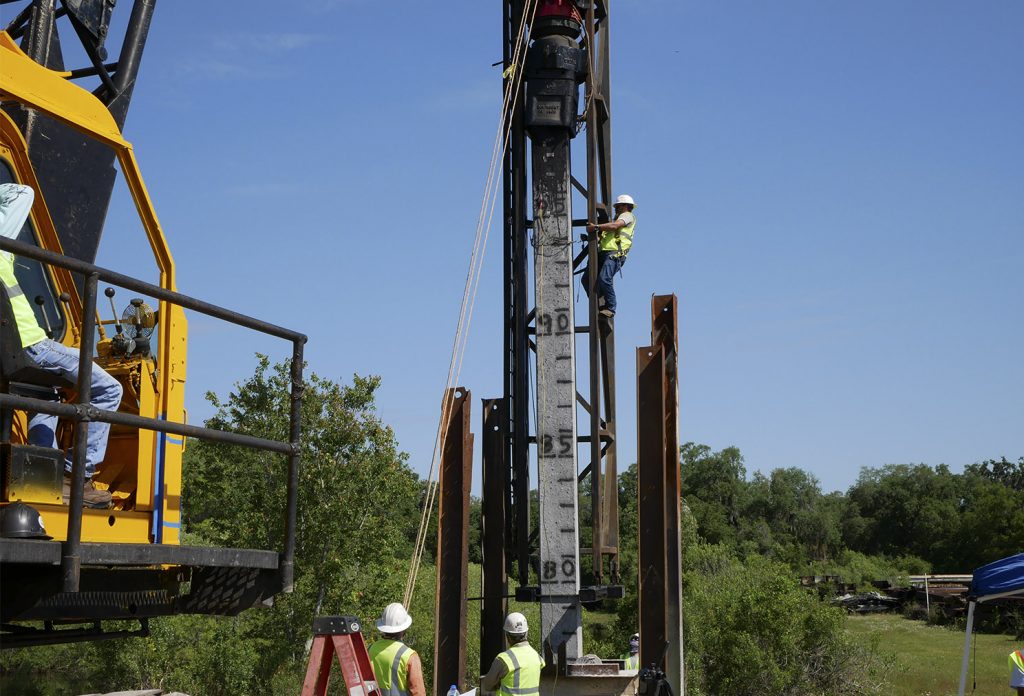
As we look ahead, the future of concrete technology holds immense promise. By embracing innovation and prioritizing sustainability, we can harness the potential of this versatile material to create a more resilient and sustainable built environment. From towering skyscrapers to intricate architectural marvels, the latest concrete technology is shaping the future of our world, one concrete innovation at a time.
The latest concrete technology is making waves in the construction industry, with innovations like self-healing concrete and 3D printing offering new possibilities. This technology is also finding its way into unexpected places, like the napa technology wine station , where its durability and aesthetic appeal are being used to create stunning and functional wine storage solutions.
The future of concrete is exciting, with new developments constantly emerging to meet the needs of a changing world.

